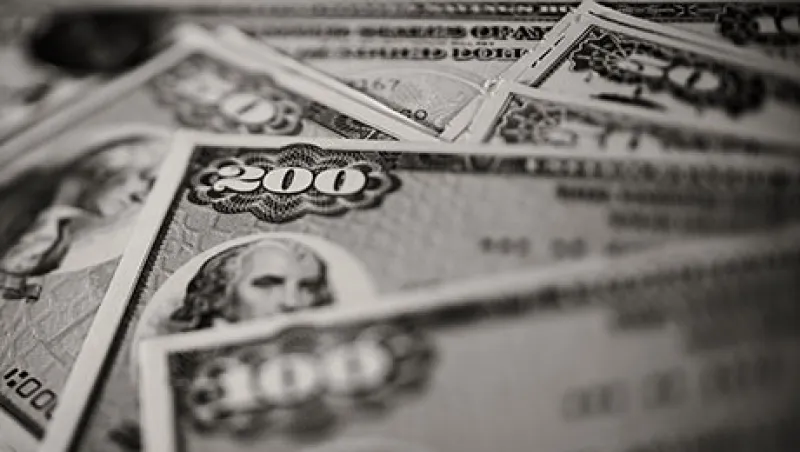For much of the past two years, the bond markets have confounded observers who were forecasting a rise in yields. As the Federal Reserve gears up for an inevitable interest rate hike, though, the pressure will likewise be dialed up on fixed income.
“There’s nothing on the traditional bond front that I don’t think stinks,” says Matthew Tuttle, manager of the $42.1 million Tuttle Tactical Management Multi-Strategy Income ETF at Etfis Capital in New York. “Bonds have been in a bull market for 30 years, and that can’t last forever.”
Fed chair Janet Yellen has intimated that the central bank will hike rates — ever so slowly — this year if economic conditions continue to strengthen. The Fed’s target for the federal funds rate has stood at a record low of zero to 0.25 percent since December 2008. The unemployment rate, one key Fed consideration, fell to a seven-year low of 5.3 percent in June. “It will be nice if it plays out gradually,” says Charles Lieberman, chief investment officer at Advisors Capital Management, a $1 billion registered investment adviser in Ridgewood, New Jersey. “But the risk is, it doesn’t because of the progressive tightening of the labor market.”
Although some economists believe the Fed will boost rates just once this year, Michael Cloherty, head of U.S. rates strategy at RBC Capital Markets in New York, sees two hikes. According to him, the Treasury market is pricing in a peak federal funds rate of 2 percent, he says. “But the Fed always overshoots in tightening and easing,” he adds. “The market isn’t pricing in nearly enough risk for a bigger hike.” Cloherty expects economic growth of 2.75 percent for the second half of the year, compared with an average rate of 1.5 percent for the first two quarters. That will help push inflation a bit higher, he says: “There won’t be massive inflation, but with the ten-year Treasury yield not far above 2 percent, you don’t need massive inflation to make that look like a bad investment.” Cloherty sees the ten-year Treasury yield climbing to 2.7 percent at year-end, from 2.26 percent as of August 6, and then to 3.5 percent by the end of 2016. The market hasn’t seen yields that high since the spring of 2011, but that is still a low level by historical standards.
The Fed’s tightening will prove quite unnerving to bond investors who shifted to the asset class to preserve capital following the 2008–’09 financial crisis, Lieberman says. “They will discover they can lose money pretty effectively in bonds also.”
The problem is magnified for investors who buy bond funds rather than the bonds themselves. An investor holding an investment-grade bond to maturity should receive the bond’s par value. But if bond prices fall for a sustained period, there is no guarantee a bond fund will rebound to any set price — let alone the cost of purchase. “As a bond fund investor, you may not be protecting your capital, and fees could be cutting into your income,” says Mick Heyman, executive and sole owner of Heyman Investment Counseling, a $35 million RIA in San Diego.
A bear market in bonds could hit retirees particularly hard, as many of them have built their portfolio around the asset class. “All the advice we give people near retirement is to reduce risk based on bonds’ past performance,” says Tuttle. “If that [past performance] doesn’t hold, bad things will happen.” And he thinks bad things will happen. “When the bond bubble bursts, it could be worse than stocks,” Tuttle says.
So what’s an investor looking for secure income to do? Some experts recommend dividend stocks, preferred stocks, real estate investments trusts and master limited partnerships. To be sure, the income from these investments isn’t guaranteed, and the value of the investments can easily fall. Someone with a long time horizon and a tolerance for volatility would do well to consider blue-chip dividend stocks, Heyman says. That would give investors a yield of more than 3 percent, in some cases, with the potential for capital appreciation. To be sure, someone primarily concerned about protecting capital should consider a laddered portfolio of Treasuries or high-quality municipal bonds, with a variety of maturities, he advises. In a rising interest rate environment, the proceeds from maturing bonds could be invested in paper with higher yields. And, so long as investors don’t buy the bonds above par, they should avoid losses on principal.
Lieberman hasn’t given up completely on bonds either. “The most effective strategy is to shorten maturities,” he says. “The shorter the maturity, the less sensitive a bond portfolio has to rising interest rates.” The average duration of his firm’s fixed-income portfolio is only one year, which Lieberman says is a testament to his firm’s concern about risk.
Overall, though, the future looks bleak for bonds, many investors say. Problems like Greece’s debt crisis and China’s stock plunge can cause a brief flight to Treasuries. “Longer term, I don’t see how the math works,” Tuttle says. “The Fed has stolen future returns for bondholders. I would be shocked if my view were to change in the next year or two.”
Get more on fixed income and registered investment advisers.







